Subaru Forester Hybrid and Subaru XV Hybrid review
There has been a massive surge in hybrid sales in 2019 and the Japanese brand is the latest maker attempting to cash in.
New cars
Don't miss out on the headlines from New cars. Followed categories will be added to My News.
A fringe choice for many years, hybrid power is making its mark in regular models. The marker that its time has arrived came last month — Toyota’s RAV4 was our second-best selling car, with more than half of its sales coming from the award-winning hybrid version.
Electrified versions of popular models, as opposed to eco-focused machines such as the Toyota Prius, accounted for 95 per cent of hybrid deliveries in 2019. That’s why Subaru says now is the time to electrify the Forester and XV bestsellers.
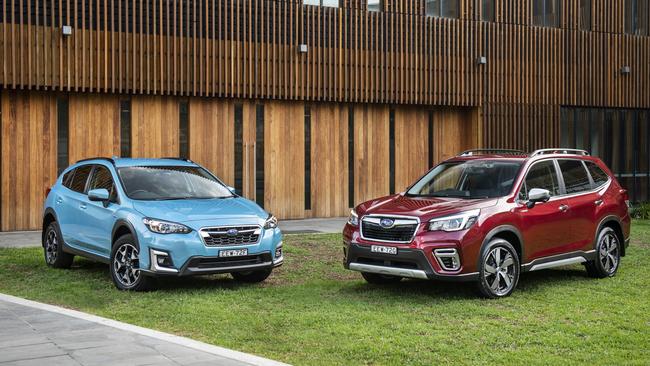
Senior product manager Goran Popov says the brand is preparing “for the next shift in the market: hybrid and battery electric vehicles. The pendulum is starting to swing towards electric technologies.”
Subaru Australia boss Colin Christie says the hybrid duo surpassed initial expectations, with 5000 people expressing interest in buying the cars and the first two months’ supply selling out.
Drivers who decide their next car should be a hybrid SUV face complex choices.
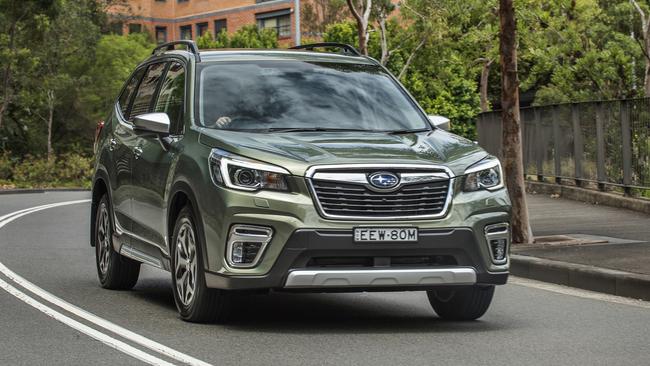
Options include a plug-in hybrid with a large battery capable of commuting on electric power alone (such as the Mitsubishi Outlander PHEV or coming Ford Escape PHEV) or a conventional hybrid with a powerful electric motor capable of low-speed running (at work in the RAV4 Hybrid).
Then there is the mild hybrid option, as in the new Subaru Forester.
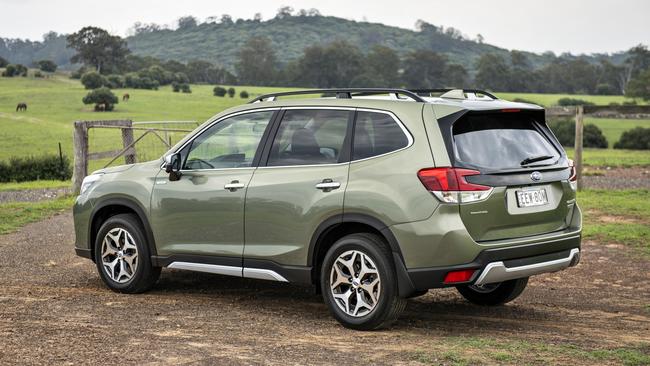
The regular Forester’s 2.5-litre petrol engine (136kW/239Nm) uses 7.4L/100km. It propels the 1520kg SUV from rest to 100km/h in 9.5 seconds.
The Forester Hybrid pairs a 2.0-litre engine (110kW/196Nm) with a 12.3kW/66Nm electric motor mounted in the continuously variable transmission. It uses a little less fuel (6.7L/100km is the official combined figure) but needs a further 1.3 seconds to reach the highway speed limit.
Subaru’s contender does not impress on paper. Its electric motor is comprehensively outgunned by the 88kW job in the RAV4 and the Forester uses an extra 2L/100km of fuel compared with the Toyota.
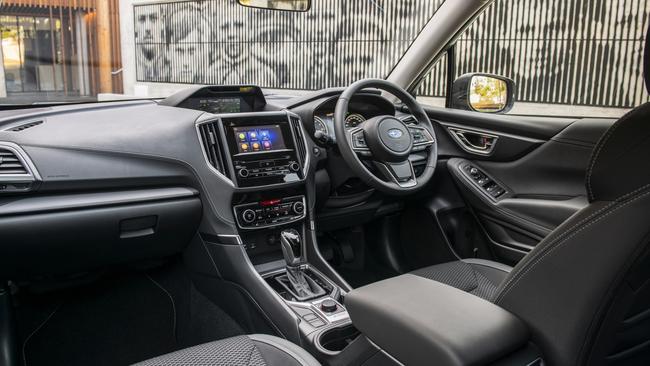
The thirst hovered around the 10L/100km mark during our time with the Forester, which rarely feels like a hybrid. The tiny electric motor struggles to propel the car on its own, so the petrol engine is almost always burning fuel, even when traffic crawls along at 10km/h.
The Forester saves juice by switching off the engine when coasting or approaching traffic lights but that sort of “sailing” feature isn’t unique these days. The Hybrid won’t slink silently around urban centres or car parks and there is no dedicated EV mode for drivers to lock the car into electric propulsion.
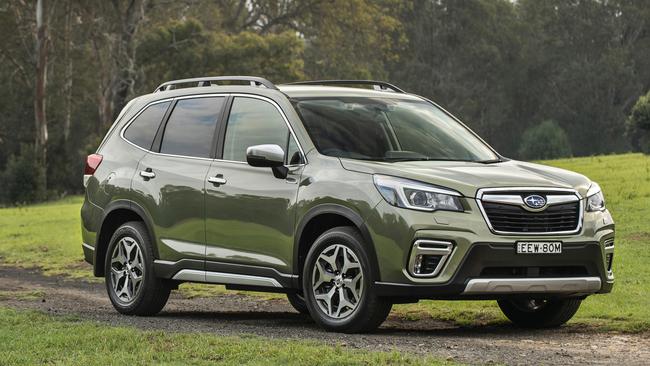
We also experienced odd rocking sensations and doughy responses from its CVT.
Beyond that, the Forester Hybrid feels like a regular Subaru. You get meaty steering, unflappable traction, first-class driver aids and a good degree of practicality.
The Forester Hybrid L starts at $39,990 plus on-road costs (about $45,000 drive-away), $3050 more than the Forester 2.5i-L it is based on, $4500 more than the cheapest RAV4 Hybrid or a $1500 premium over the AWD Toyota.
The standard Forester Hybrid makes do with a small 6.5-inch touchscreen and cloth seats. At a $5000 premium, the Hybrid S adds a larger screen, sunroof, leather trim and other features.
Subaru says key features of the Forester are the lofty ride height and mechanical all-wheel drive, the better to handle rough territory.
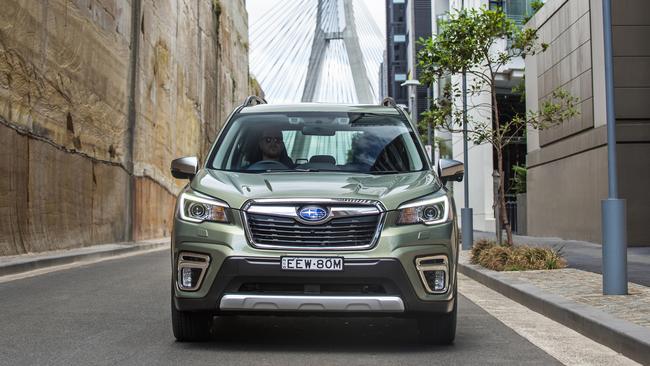
There is also a dedicated off-road mode using precise torque from the electric motor to make smooth progress on rocky ground.
But off-road adventures should be tempered by the lack of a spare, as the hybrid’s lithium-ion battery claims space normally reserved for a full-size wheel. As a trade-off, the hybrid’s boot is slightly bigger than the normal version.
The price gap and small difference in fuel economy between a regular Forester and the Hybrid mean you need to drive the latter for more than 300,000km to find financial savings — that is, 20 patient years on the road in a heavier, slower Forester variant.
RAV4 owners break even by 90,000km while enjoying performance that’s superior to the non-hybrid. The Forester costs $486.60 a year to service, more than double Toyota’s $215.
Subaru isn’t the only manufacturer boarding the hybrid train. Ford is set to introduce a plug-in hybrid version of the Escape, while its new Puma baby SUV could feature mild hybrid power.
Mazda’s fuel-saving Skyactiv-X engine, coming to the Mazda3, blends mild hybrid petrol tech with the ability to operate in a diesel-like sparkless mode. Customers can expect hybrid power to feature in the new Nissan X-Trail and Qashqai, due soon.
For now, the Subaru Forester Hybrid gives consumers a fresh option, while also reinforcing Toyota’s place as the hybrid leader.
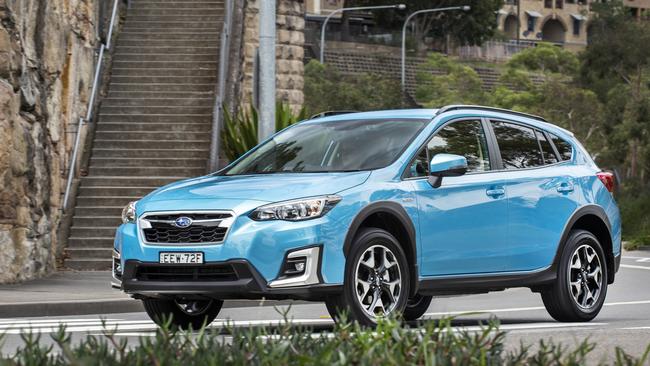
Subaru XV drive
Want a smaller Subaru hybrid? The Impreza-based XV is for you. Powered by the same hybrid set-up as its big brother, the XV Hybrid is slightly thriftier (claiming 6.5L/100km and returning mid-8L in real-world motoring) and swifter in a straight line.
Pricing-wise, it’s tricky to compare the Hybrid with the regular XVs. The conventionally powered siblings range from $29,240 to $36,530 plus on-roads and the sole hybrid version costs $35,580 plus on-roads, or about $40,000 drive-away.
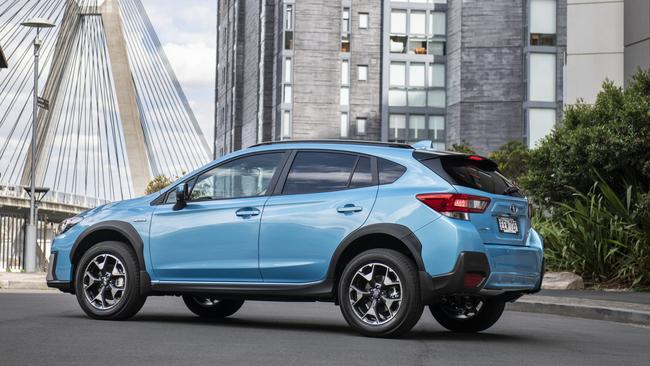
The Hybrid, in common with the cheapest XV, has 17-inch wheels, underwhelming 6.5-inch touchscreen, manually adjustable cloth seats and non-illuminated vanity mirrors.
But it also gets the Vision Assist found on the XV 2.0i-S, combining blind spot monitoring, high-beam and lane change assistance, rear cross traffic alert and reverse auto braking.
The EyeSight driver assist suite, shared with premium XV grades, adds adaptive cruise control, autonomous emergency braking, lane keep assistance and more.
On the road, it requires drivers to make very few compromises and overall it’s a very mild hybrid experience.
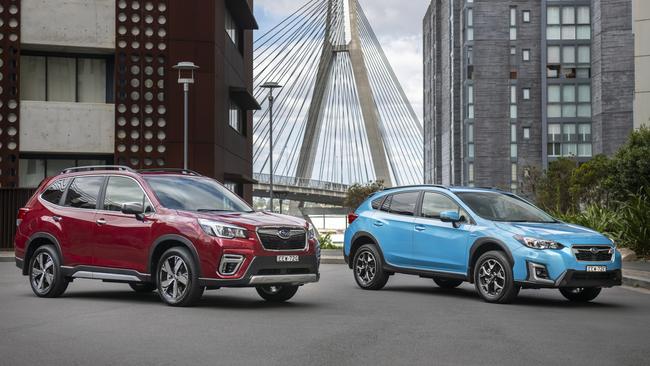
Subaru Forester Hybrid L vitals
Price: About $45,000 drive-away
Warranty/servicing: 5 years/unlimited km, $2433 for 5 years
Safety: 5 stars, 7 airbags, AEB, rear camera, blind spot monitor, active cruise control, rear cross traffic alert, lane keep assist, reverse auto braking, side-view monitor, driver monitoring
Engine: 2.0-litre 4-cyl boxer, 110kW/196Nm; electric motor, 12.3kW/66Nm
Thirst: 6.7L/100km
Boot: 509L
Spare: None; inflation kit
Subaru XV hybrid vitals
Price: About $40,000 drive-away
Warranty/servicing: 5 years/unlimited km, $2433 for 5 years
Safety: 5 stars, 7 airbags, AEB, active cruise control, lane keeping assistance
Engine: 2.0-litre 4-cyl boxer, 110kW/ 196Nm; electric motor, 12.3kW/66Nm
Thirst: 6.5L/100km
Boot: 345L
Spare: None; inflation kit
Originally published as Subaru Forester Hybrid and Subaru XV Hybrid review
